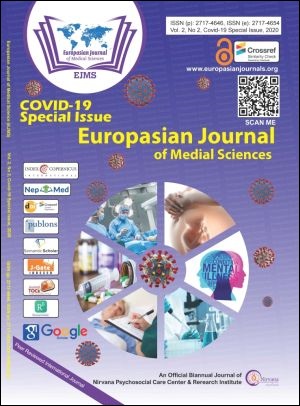Currently Used Diagnostic Techniques for The Detection of SARS COV-2 Coronavirus
Keywords:
SARS-COV-2, Diagnosis, Reliable Techniques, Authenticate, COVID-19, PandemicAbstract
The corona virus disease being aware commonly as Covid-19 in passing days among common masses is a novel viral illness of the systema respiratorium, causing a sustained pandemic which is in particular characterized by atypical pneumonia with specific symptoms of mild fever, runny nose with secreted fluid similar to flu, hypoxia, myalgia, anosmia, ageusia, shortness of breath, normal or decreased leukocyte count, ground glass opacities, sore throat and cough without phlegm. It is caused by an epidemic referred as SARS CoV-2 with abbreviation of severe acute respiratory syndrome coronavirus-2 nowadays. The procedures to be adopted for the diagnosis of COVID-19 should be based not only on clinical but epidemiological agents also and anyways stand on the link to an assessment and likelihood of the infection. The SARS CoV-2 is diagnosed with different test techniques like serological, molecular and others but most common for it is RT-PCR which is widely used and most reliable one to authenticate the findings of this disease. In the earlier times its detection was too an issue but luckily soon after its threat the scientists and organizations involved themselves and developed strong techniques to get reliable and accurate results with peaceful outcomes. The including such techniques are like immunological assay, amplification technique like RT-PCR (Spin column-and poly amino ester magnetic nanoparticle (pcMNPs) extraction method. Real-time nanopore target sequencing (NTS) and amplification methods) while on the other hands latest in use techniques are Isothermal nucleic acid amplification (as their subcategories include transcription-mediated amplification (TMA), Loop-mediated isothermal amplification (LAMP), rolling circle amplification (RCA) and clustered regularly interspaced short palindromic repeats (CRISP), and TMA assay). The novel techniques developed for this particular purpose are Biosensors, Localized surface plasma resonance (LSPR) sensor, the Field effect transistor (FET) and Cell-based potentiometric biosen.
Downloads
Downloads
Published
How to Cite
Issue
Section
License
Copyright (c) 2020 Muhammad Tayyab

This work is licensed under a Creative Commons Attribution 4.0 International License.
The author(s) retain the ownership of the copyrights for their work published in EJMS without any restrictions. Upon submission, the author(s) grants EJMS a license to publish, including to display, store, copy, and reuse the published content.
License to Publish
By submitting a manuscript to EJMS, the author(s) grant the journal a non-exclusive license to:
- Publish and distribute the content in all formats, media, and platforms (both existing and future), while identifying EJMS as the original publisher.
- Reproduce, display, and store the content in both print and online formats, including institutional and digital repositories.
- Translate, adapt, and summarize the work, including reprints, extracts, and abstracts.
- Develop derivative works based on the original content.
- Include the work in electronic databases and provide links to third-party materials.
Creative Commons Licensing
In addition to EJMS’s publishing rights, authors grant third parties the right to use, share, and distribute their work under the Creative Commons Attribution 4.0 (CC BY 4.0) International License. This allows unrestricted use of the content, provided proper attribution is given to the original author(s) and the journal.

